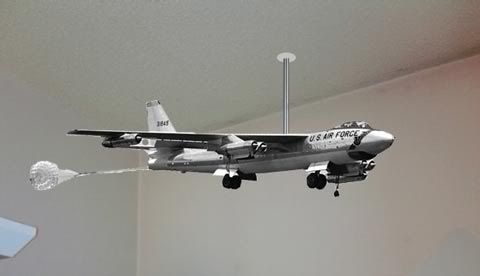Hi,
All the suggestions I found online about how to hang model airplanes focused on using fish line or similar line attached at multiple points to the plane.
I'm getting ready to start work on a 1/72 scale B-47 plastic model.
Below is a simulated illustration of how I envision it looking mounted from the ceiling, complete with the small chute that was commonly used to allow the engines to maintain power.
Note that a single, transparent plastic (acrylic, etc.) rod is used instead of several wires or lines. The rod, or its mount, would be built into the model early in the building process so that it would be firmly anchored, and it would be firmly anchored into the ceiling.
The concept is similar to the plastic stands that are used to display models on shelves and desks, only it is in reverse, going upward instead of downward.
Has anyone ever tried doing this or seen it done? If you see problems, please feel free to shoot holes in my idea. I'd rather have the holes shot now before I start drilling holes in the plane or ceiling!
Thanks,
Bill
